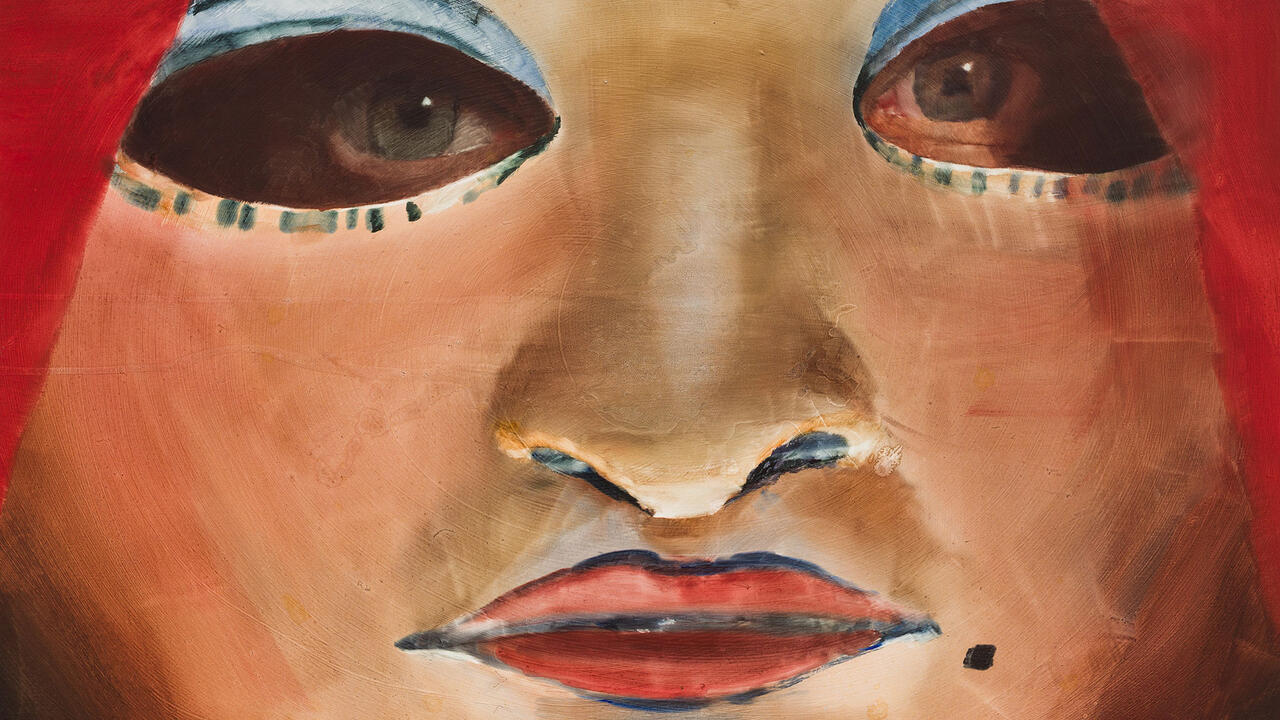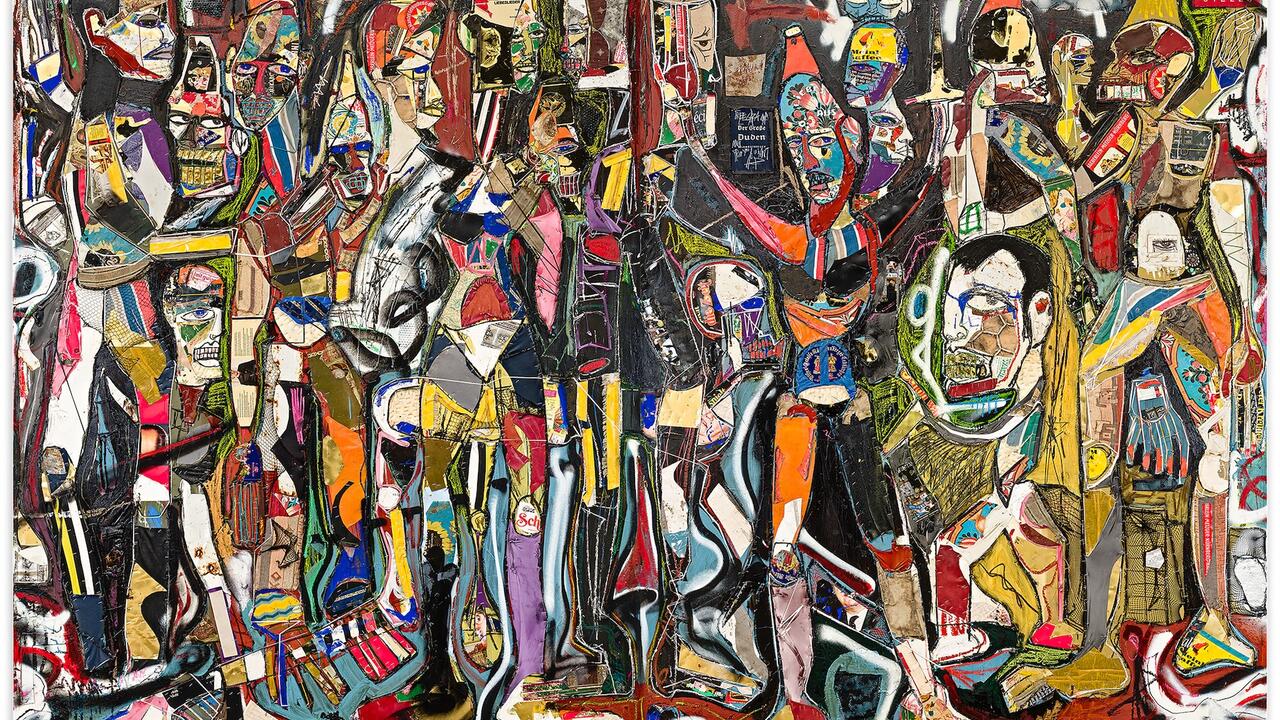Jacqueline Humphries
Modern Art, London, UK
Modern Art, London, UK

The belated abstractionist can’t create anything truly new, only unmake what’s already there: demolish the palaces, collide the bricks. Such a narrative, if you want one, underpins Jacqueline Humphries’s paintings of the last two decades. From apparent serenity and reduction – a grid of black dots, a painted rectangular frame edging towards a canvas’s borders, and, regularly since 2006, a flat silver ground – the 50-something American artist will launch into blackening disruption: quivery fingernail scratches, cloudlike gestural smears, smudgy scumbling like errant printer’s ink. The result is only truly abstract if you don’t recognize postwar America’s vanguard stylistics – abstract expressionism, minimalism, pop – being tossed into one ring, occasioning paintings that are finished when bloodied but unbowed.
Nostalgic for peace or for categories, you might read one of Humphries’s canvases back through its stages and imagine that when it was a clean wall of silver, tranquility reigned. Yet embryonic chaos was there too. Her metallic ground, which reflects external light (‘the light isn’t in the painting, but remains outside of it,’ the artist said in 2012), is undermining in itself, subtly changing amid the vagaries of a viewer’s roving feet and eyeballs. So even Humphries’s relative stabilities are volatile: she’s highly structural about disorder, plans for it. Primarily, though, her practice is cannibalistic, and lately it seems to have started on its own tail. Her third solo show at Modern Art, which split a pair of divergent approaches across the gallery’s two London spaces, found Humphries pointing back, in the blacked-out Fitzroy Square space, to her celebrated 2005 series of sweeping abstractions lit with UV lights, ‘Black Light Paintings’, while at Helmet Row she nodded to – among many other things – the wavering fields of dots in her paintings from the early 1990s.
For Humphries these retrospective moves are likely intended as new ways to create useful trouble for herself, to renew the existing; and certainly the black light paintings build on their predecessors. In two rooms illuminated by grids of UV strip-lights, big aqueous canvases collapsed distinctions between ye olde gestural abstraction, radioactive graffiti as high-end nightclub decor, and speeding luminescent obscurities in the Marianas Trench. These foxing productions, which play havoc with taste, are thus haloed by corny associations and inferences of magical realms; they’re also hugely seductive, compositionally tangled and difficult to remember except as fragmentary afterimages – tangerine glow-stick trails squiggling amongst phosphorescent green algae, Hubble-ish constellations speckling the black, etc. Omnidirectional suggestion is the rule: the rather less fashionable fluorescent abstractions of Albert Irvin are also brought to mind, as is the notion that these glowing rectangles are paintings for two screen ages, that of the cinema – Humphries has talked up associations between her art and film noir – and that of the computer. You might then think this thought itself vulgar, unworthily simplifying. Still, it lingers.
At Helmet Row, the show delivered bright and open light and silver-based canvases, while the colour temperature plummeted. Across the rooms’ spread of large, untitled works, discordances rather than gestalts prevailed: regiments of apparently template-applied dots overlaid with hand-painted ones; a painting whose febrile, all-over black-on-silver calligraphy, recalling postwar De Koonings such as Attic (1949), is effusively tarnished by a thick, thrashing central bulk of pewter-coloured slurry; a metallic field of blue-on-silver, livid with abrasions, on which a black cloud descends from the upper left, disintegrating as it falls to the lower right. The palette here is Warholian and invokes the ‘Death and Disaster’ paintings in particular since these, in their way, are all disaster paintings, the disaster being, apparently, the truncation of the American cultural century. But a catastrophe can be an opportunity: ask a savvy stock market shorter, or ask Humphries. While her paintings suggest 20th-century American art’s trajectory going into reverse, moving between them – picking up the effusive garbling and glossolalia that replace modernism’s progressive case-stating – attests to the joys of careening backwards off a cliff.






















